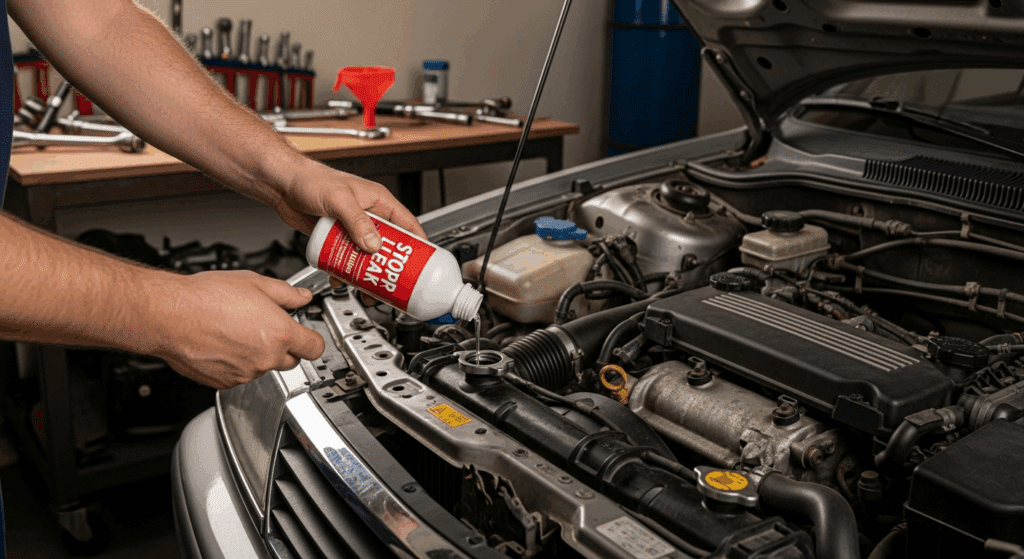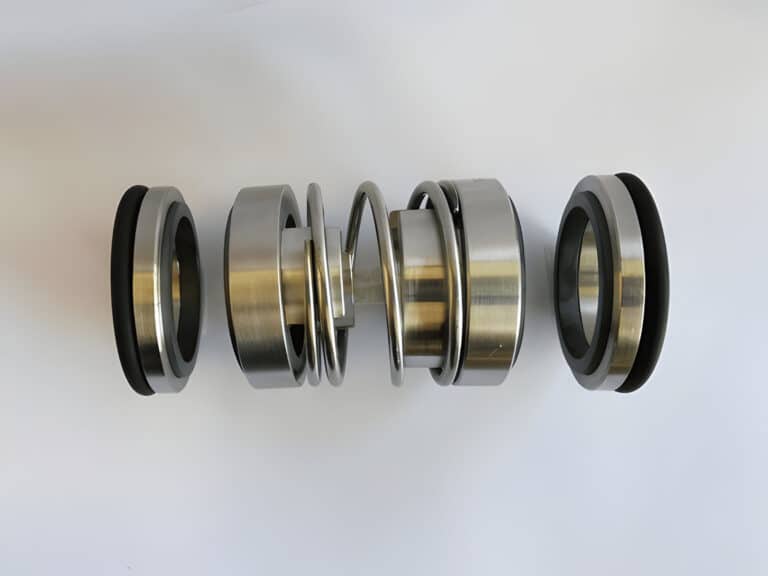Stop leak products won’t typically ruin your engine when used correctly, but they can cause serious damage if misused or overused. These chemical additives work as temporary fixes for minor leaks, but they’re not permanent solutions and can sometimes create bigger problems than they solve.

How Stop Leak Works
Stop leak additives contain particles or polymers that swell rubber seals or clog small holes where coolant escapes. Think of them like liquid bandages for your cooling system—they flow through until they find a leak, then harden or expand to seal it.
The problem starts when these particles don’t just seal the leak. They can also clog narrow passages in your radiator, heater core, or water pump, reducing coolant flow and causing overheating.
The Right Way to Use Stop Leak
If you must use stop leak, follow these strict guidelines to minimize damage.
Step 1: Assess If Your Leak Qualifies for Stop Leak
Only use stop leak for small leaks that lose less than a quart of coolant per week. Anything larger won’t seal properly and you’ll just waste money while risking engine damage.
Step 2: Choose the Right Product for Your Specific Leak
Select a product specifically designed for your leak type. Head gasket sealers differ from radiator stop leaks, and using the wrong one reduces effectiveness while increasing clog risk. Read the label carefully to match the product to your problem.
Step 3: Follow the Instructions Exactly
Never use more than recommended thinking it’ll work better—excess product dramatically increases clogging risk. If the bottle says use half for a 4-cylinder engine, don’t dump in the whole thing. More isn’t better with stop leak.
Step 4: Flush Your Cooling System After Proper Repair
Once you get the leak professionally fixed, flush your cooling system completely. This removes stop leak residue before it causes long-term damage.
Better Alternatives to Stop Leak
- Replace the damaged component: Fixing the actual problem is always better than using stop leak. A new radiator might cost $200-400, but it’s cheaper than replacing an engine destroyed by overheating.
- Tighten hose clamps: For minor external leaks, try tightening hose clamps first. Many leaks come from loose connections rather than damaged components.
Signs Stop Leak Has Caused Damage
Watch for these warning signs that stop leak is harming your engine:
- Temperature gauge climbing higher than normal: This indicates restricted coolant flow through your engine. Stop leak particles are likely clogging passages and preventing proper cooling.
- Weak or no heat from your vents: This suggests heater core blockage, which often happens within weeks of using stop leak products. The heater core’s tiny passages are especially vulnerable to clogging.
- Reduced coolant flow through your radiator: Deposits are forming in your cooling system. You might notice your upper radiator hose stays cooler than it should during normal operation.
- White smoke from your exhaust: This indicates coolant entering the combustion chamber. It suggests stop leak hasn’t sealed the problem and might be making it worse by creating additional blockages.



